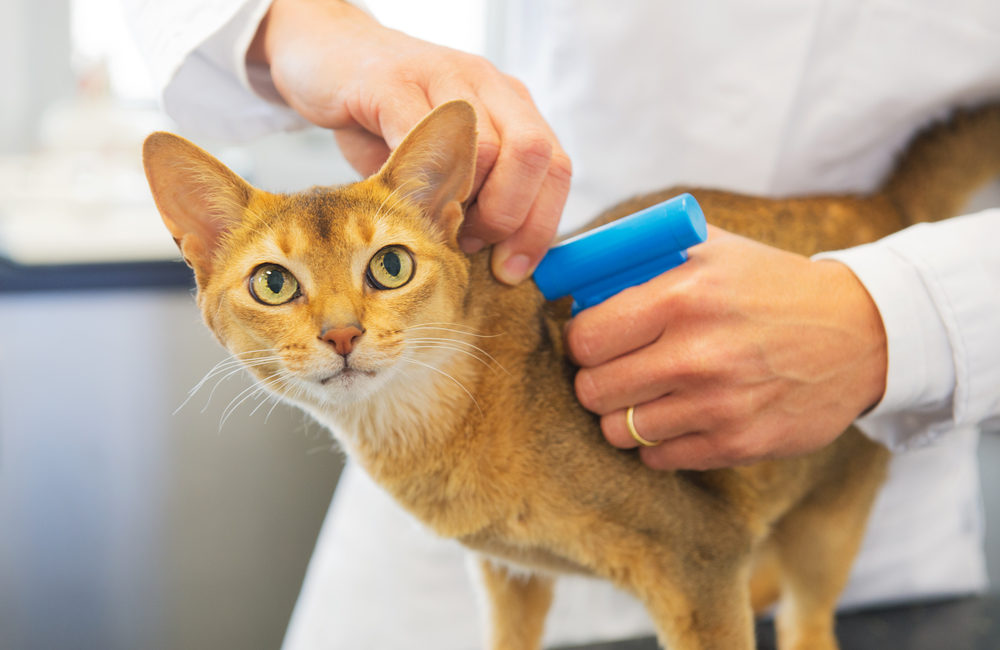Losing your pet can be a traumatic, or even tragic, event. Many pet owners choose to protect their pets with collars and ID tags. Unfortunately, collars and ID tags are not foolproof, and pets can still get lost. Collars can break, fall off or removed and tags can become lost or worn. It can leave your pet among the unidentified lost strays at local animal shelters. Microchipping your pet is an excellent method of making sure your pet can be identified and reunited with you if lost. Cats are 20 times more likely to be returned home than cats without a microchip, while dogs are 3 times more likely to be returned home than those without.
Microchips are computer chips that have a unique identification number. They are implanted just under the skin with a syringe and needle, similar to a vaccination. They are about the size of a grain of rice. Unlike collars and ID tags, they can never break, be removed or fall off. They work by receiving a radio signal from a scanner and transmitting the encoded chip identification number back to the scanner. With the chip identification number in hand, reuniting you with your lost pet is as easy as a phone call.
If your pet has already been microchipped, remember to keep your information up to date in the pet registry. A microchip cannot get your pet home if your details are no longer accurate!
Hopefully, your pet will never get lost. However, accidents can happen, and sometimes pets get outside. If this is the case, having a pet that is microchipped is giving them the best chance possible to get them back home again.
Written By: Torbay Road Animal Hospital




